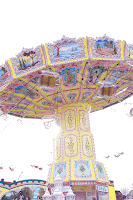The atmosphere of the circus has served as a dramatic setting for many musicians and writers. The famous circus theme song is actually called "Entrance of the Gladiators", and was already composed in 1904The Greatest Show on Earth is a 1952 drama film set in the Ringling Bros. and Barnum & Bailey Circus. The film was produced, directed, and narrated by Cecil B. DeMille. This cirkus-film has often been cited by film historians and movie buffs as one of DeMille's lesser motion pictures. Many critics and film fans consider this film among the worst to have ever won the Academy Award for Best Picture.
Recently the use of animals in the circus has been a matter for controversy, as animal-welfare groups have documented multiple instances of animal cruelty, used in the training of performing animals. Elephants in particular have been of some problem. Sweden, Austria, Costa Rica, India, Finland, Singapore, Switzerland, Denmark and the Netherlands have already restricted the use of animals in entertainment. In response to a growing unease from the public about the use of animals in entertainment, the formation of animal free circuses have begun cropping up around the globe, and animal free circuses have begun to be more wide-spread.















































